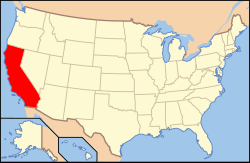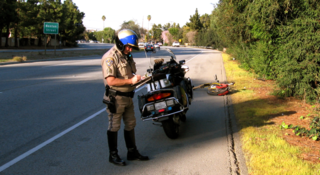
A highway patrol is a police unit, detail, or law enforcement agency created primarily for the purpose of overseeing and enforcing traffic safety compliance on roads and highways within a jurisdiction. They are also referred to in many countries as traffic police, although in other countries this term is more commonly used to refer to foot officers on point duty who control traffic at junctions.

The California Highway Patrol (CHP) is a state law enforcement agency of the U.S. state of California. The CHP has primary patrol jurisdiction over all California highways and roads and streets outside city limits, and can exercise law enforcement powers anywhere within the state. The California Highway Patrol can assist local and county agencies and can patrol major city streets along with local and county law enforcement, state and interstate highways, and is the primary law enforcement agency in rural parts of the state.
Security police officers are employed by or for a governmental agency or corporations to provide security services to those properties.
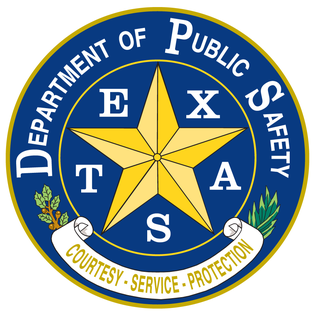
The Department of Public Safety of the State of Texas, commonly known as the Texas Department of Public Safety (DPS), is a department of the state government of Texas. The DPS is responsible for statewide law enforcement and driver license administration. The Public Safety Commission oversees the DPS. However, under state law, the Governor of Texas may assume command of the department during a public disaster, riot, insurrection, formation of a dangerous resistance to enforcement of law, or to perform his constitutional duty to enforce law. The commission's five members are appointed by the governor and confirmed by the Texas Senate, to serve without pay for staggered, six-year terms. The commission formulates plans and policies for enforcing criminal, traffic and safety laws, preventing and detecting crime, apprehending law violators, and educating citizens about laws and public safety.

Law enforcement in Australia is one of the three major components of the country's justice system, along with courts and corrections. Law enforcement officers are employed by all three levels of government – federal, state/territory, and local.
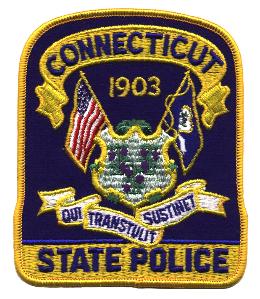
The Connecticut State Police (CSP) is a division of the Connecticut Department of Emergency Services and Public Protection responsible for traffic regulation and law enforcement across the state of Connecticut, especially in areas not served by local police departments. The CSP currently has 940 troopers as of October 8, 2020 and is headquartered in Middletown, Connecticut. The Connecticut State Police is also responsible for protecting the Governor of Connecticut, Lieutenant Governor of Connecticut, and their families.
A law enforcement officer (LEO), or peace officer in North American English, is a public-sector or private-sector employee whose duties primarily involve the enforcement of laws, protecting life & property, keeping the peace, and other public safety related duties. Law enforcement officers are designated certain powers & authority by law to allow them to carry out their responsibilities.

The Alaska State Troopers, officially the Division of Alaska State Troopers (AST), is the state police agency of the U.S. state of Alaska. It is a division of the Alaska Department of Public Safety (DPS). The AST is a full-service law enforcement agency that handles both traffic and criminal law enforcement. The AST is also involved in apprehending fugitives as part of the Alaska Fugitive Task Force, an inter-agency collaborative of Alaska police departments that cooperates with police agencies throughout the United States and less commonly with Interpol in apprehending wanted men and women. Unlike many lower 48 states, the AST also serves as Alaska’s primary environmental law enforcement agency; troopers assigned to the AST’s Division of Alaska Wildlife Troopers are known as "Alaska Wildlife Troopers" and primarily serve as game wardens, although they retain the same powers as other Alaskan state troopers.

The Washington State Patrol (WSP) is the state patrol agency for the U.S. state of Washington. Organized as the Washington State Highway Patrol in 1921, it was renamed and reconstituted in 1933. The agency is charged with the protection of the Governor of Washington and the grounds of the Washington State Capitol; security aboard the vessels and terminals of the Washington State Ferries; law enforcement on interstate and state highways in Washington; and providing specialized support to local law enforcement including laboratory forensic services, mobile field forces during periods of civil unrest or disaster, and tactical teams. The State Fire Marshal's Office, responsible for operation of the Washington State Fire Training Academy and for certain aspects of civil defense mobilization, is a component office of the Washington State Patrol, and the State Patrol is the managing agency of the Washington Fusion Center, which coordinates anti-terrorist and anti-organized crime activities within Washington.

The Colorado Rangers Law Enforcement Shared Reserve is a governmental police agency in the U.S. state of Colorado. Colorado Rangers are sworn, Colorado P.O.S.T. Certified police officers who serve as force multipliers for law enforcement agencies throughout the state of Colorado. The agency is designed to allow law enforcement agencies to reduce duplicated costs for training, equipment, and deployment of police officers by sharing sworn officers by police agencies throughout the state.
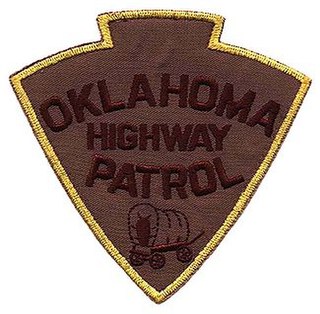
The Oklahoma Highway Patrol (OHP) is a major state law enforcement agency of the government of Oklahoma. A division of the Oklahoma Department of Public Safety, the OHP has traffic enforcement jurisdiction throughout the state. OHP was legislatively created on July 1, 1937, due to the growing problem of motor vehicle collisions, the expansion of highway systems, and the increase in criminal activities.

The Colorado State Patrol(CSP) (originally known as the Colorado State Highway Courtesy Patrol), based in Lakewood, Colorado, is a division of the Colorado Department of Public Safety, and is one of the official state patrol agencies of Colorado, along with the Colorado Bureau of Investigation (CBI), Colorado Division of Criminal Justice (DCJ), Colorado Division of Fire Prevention & Control (DFPC), and Colorado Division of Homeland Security and Emergency Management (DHSEM). Additionally, the Executive Director's Office supports operations of the five divisions and houses the Colorado School Safety Resource Center (CSSRC) and Colorado Integrated Criminal Justice Information Systems (CJIS). The CSP primarily enforces traffic laws on interstates and state highways, guards the state capitol because the State didn't have any State Capitol Police and the Governor of Colorado.

The Arizona Department of Public Safety (AZDPS) is a state-level law enforcement agency with a primary function of patrolling and enforcing state laws on Arizona highways. Their headquarters are in Phoenix.

The Texas Highway Patrol is a division of the Texas Department of Public Safety and is the largest state-level law enforcement agency in the U.S. state of Texas. The patrol's primary duties are enforcement of state traffic laws and commercial vehicle regulation, but it is a fully empowered police agency with authority to enforce criminal law anywhere in the state. Highway patrol troopers are also responsible for patrolling the state Capitol Complex in Austin and providing security to the governor. The current Chief is Lieutenant Colonel Dwight Mathis.
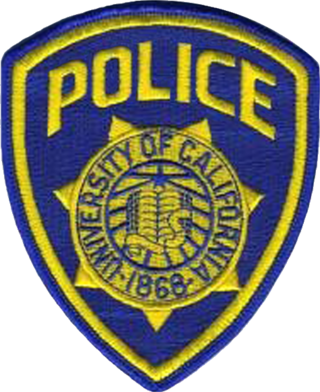
Police departments in the University of California system are charged with providing law enforcement to each of the system's campuses.

The Maryland Natural Resources Police (NRP) is the law enforcement arm of the Maryland Department of Natural Resources (DNR), tasked with enforcing laws on the state's public lands and waterways, protecting fish and wildlife, and leading search and rescue efforts. The Natural Resources Police is also the state's maritime homeland security agency.
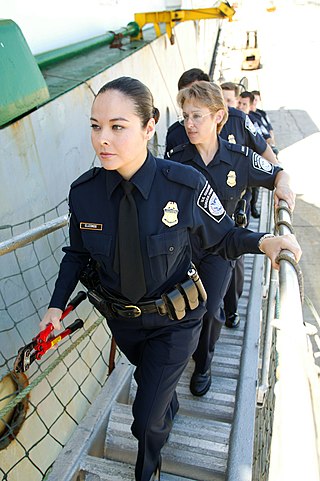
The federal government of the United States empowers a wide range of federal law enforcement agencies to maintain law and public order related to matters affecting the country as a whole.

The Florida Department of Law Enforcement (FDLE) is a state-wide investigative law enforcement agency within the state of Florida. The department formally coordinates eight boards, councils, and commissions. FDLE's duties, responsibilities, and procedures are mandated through Chapter 943, Florida Statutes, and Chapter 11, Florida Administrative Code. FDLE is headed by a commissioner who reports to the Florida Cabinet, which is composed of the governor, the attorney general, the chief financial officer, and the commissioner of agriculture. The commissioner is appointed to his position by the governor and cabinet and confirmed by the Florida Senate.

In the United States, the state police is a police body unique to each U.S. state, having statewide authority to conduct law enforcement activities and criminal investigations. In general, state police officers or highway patrol officers, known as state troopers, perform functions that do not fall within the jurisdiction of the county sheriff, such as enforcing traffic laws on state highways and interstate expressways, overseeing the security of the state capitol complex, protecting the governor, training new officers for local police forces too small to operate an academy and providing technological and scientific services. They support local police and help to coordinate multi-jurisdictional task force activity in serious or complicated cases in those states that grant full police powers statewide.

Colorado Mounted Rangers (CMR) is a 501(c)(3) nonprofit organization and former statutory state law enforcement auxiliary in the US State of Colorado. The organization served as the legal entity for the Colorado Rangers from February 1941 until In July 2018, when the Colorado Mounted Rangers ceased their operational law enforcement activities, transitioning the Colorado Rangers to a newly formed government agency named Colorado Rangers Law Enforcement Shared Reserve.

